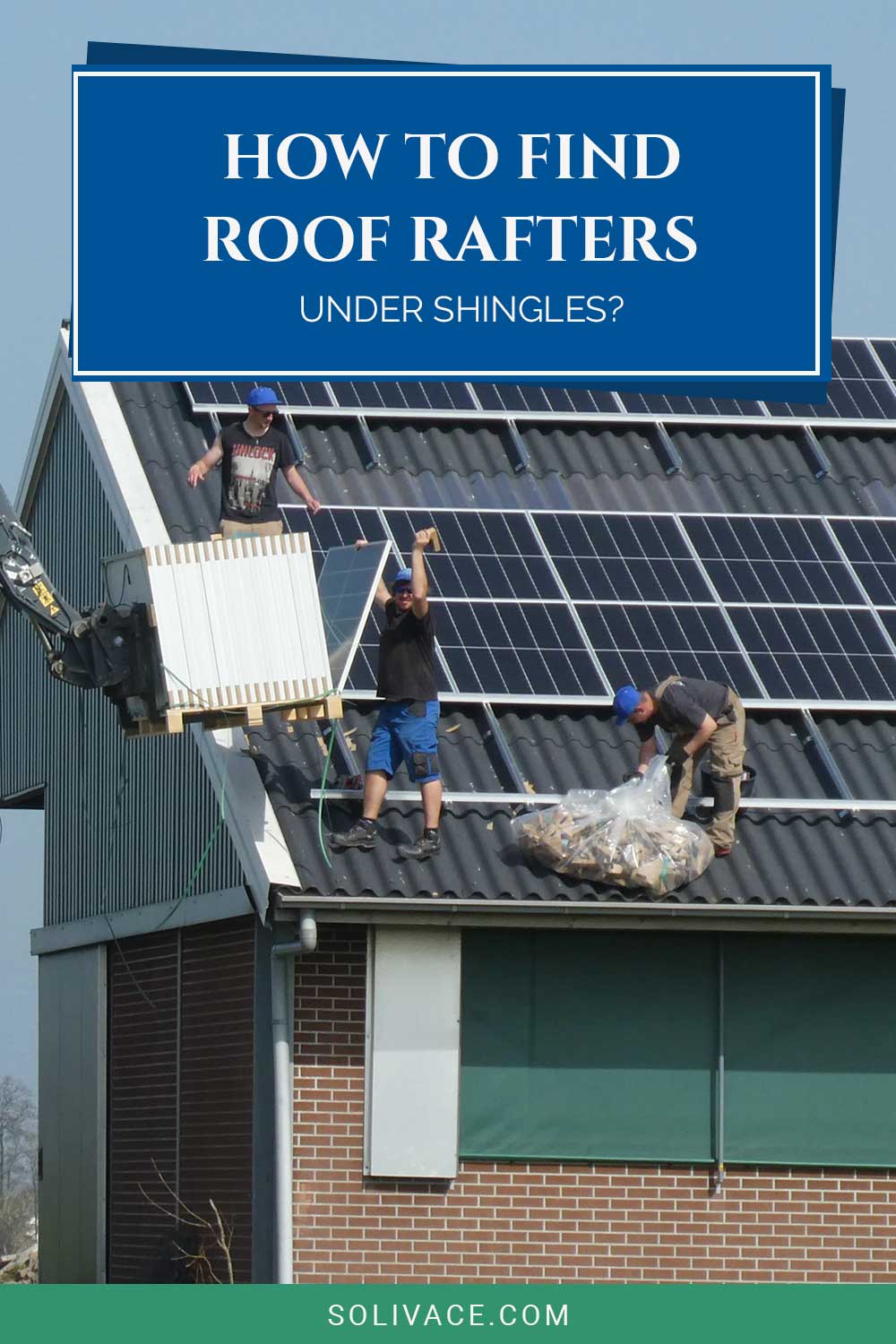How To Find Roof Rafters Under Shingles?
We may earn commissions for purchases made through links on our site. Learn more on our about us page.
There are a bunch of carpenter’s tricks and tools that will help a roofer find the rafters under the shingles, which include making a pilot hole in the roof and swinging the tool until it makes contact with a rafter.
This is most useful when attaching and installing solar panels on the roof of the home. We all know how difficult it can be to find the studs and rafters during construction projects. There are going to be older tricks or tools that veteran roofers will know to get the job done.

What Tools Do You Need?
The typical roofers’ tool bag will have hammers, nails, screws, possibly a few cutters, and specialized tools. Then you will have those roofers-only gadgets, such as tile grips and shingle-cutting tools, along with safety equipment and protective gear.
The difference between construction materials will also affect the tools needed for the construction working team. For example, gadgets that work for shingle roofs will not work on other forms of construction, and even the newer Tesla solar roof tiles will need different tools.
The powered drill and associated drill bits will be the one tool that will be consistent with all roofs.
How Should You Look for It?
This will be a matter of construction types and materials, but the general consensus would be using laser or similar tools that have the technology to see studs and rafters without damaging the walls or roofs.
There are also small drill hole tools that can easily search out a rafter through the roof tiles.
The next step would be to stake a starting peg and use a simple string to map out the rafter – this will help in the overall process of installing solar panels on the roof.
When is the Best Time to Search for it?
The best time to search for a rafter would be the best time to have a hole drilled into the roof; when the weather is dry, and there is plenty of sunlight to conduct the tasks needed for roofing.
Once the rafter is found, the process of installing or replacing roofing materials can progress.
The better the weather, the easier the process requiring the rafters to be found can be conducted.
The installation or replacement of solar panels will be the most common form of roof work that will need this type of drill-set rafter-finding task.
How Far Apart are the Rafters?
Regarding the general consensus for space between rafters, the commercial or industrial guidelines will stipulate that each beam should be either twelve to sixteen or twenty-four inches apart.
There will even be some custom sections of the roof that will need nineteen-point-two inches apart rafters to make certain architectural details possible.
This does not mean that every single roof in existence will meet or be built within these restrictions, but as a general guideline, these spaces will be the most common.
Along with the spacing, most construction will utilize two-by-fours at maximum lengths of five and a half feet long.
Common Mistakes you Need to Avoid
One of the most embarrassing and frustrating things that can occur when looking for a rafter or stud would be when drilling too many holes in the roof. This can lead to unintended consequences such as leaks in the roof or other damage to the inner layers of the ceiling.
Another common mistake is not drilling a deep enough hole for testing. If a tool doesn’t get deep enough to penetrate the layer of the roof in order to find the rafters, then an excessive hole can be made more probable.
Final Thoughts on Finding Roof Rafters Under Shingles
There will be differing opinions when attempting to find a rafter through the top of the roof, no matter the construction materials used. However, having the right experts, technology, and tools will make the job easier and lead to higher success rates.
The most important thing is to be patient and to make sure to drill the least number of times possible – this will help avoid longer-term consequences down the road, especially when concerning the wallet.
In addition, there are going to be varying forms of roof installation and repair work that require different expertise and know-how to correctly install.



Leave a Reply
You must be logged in to post a comment.